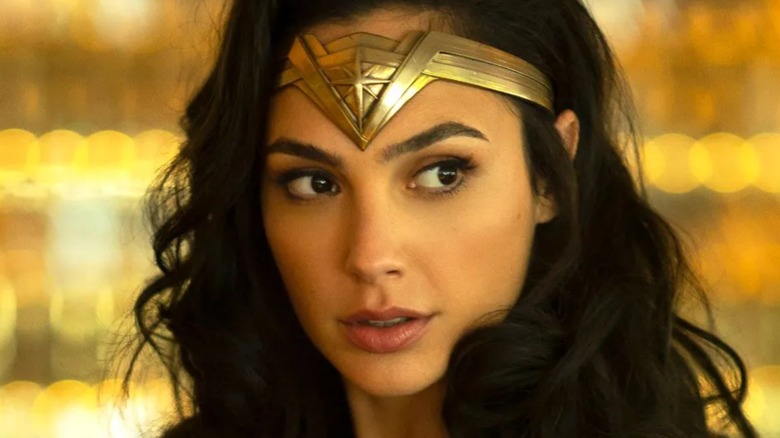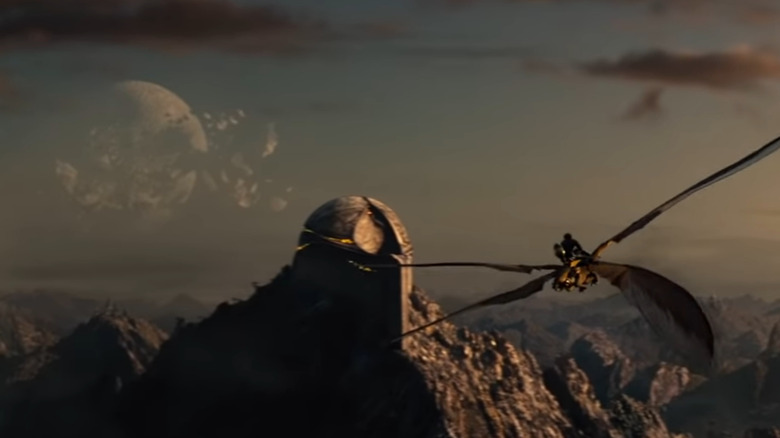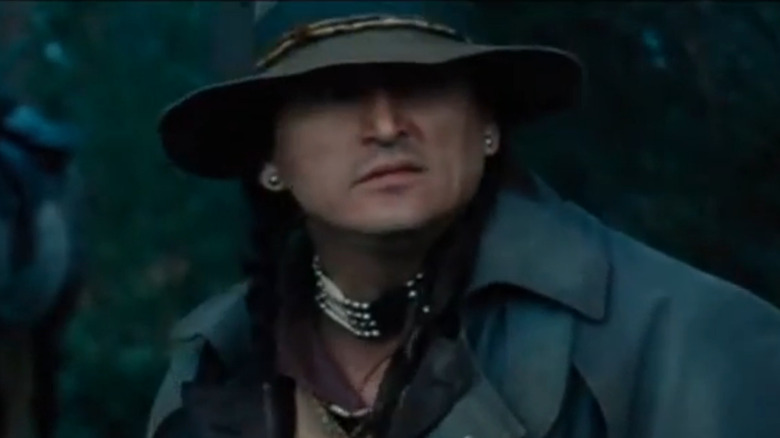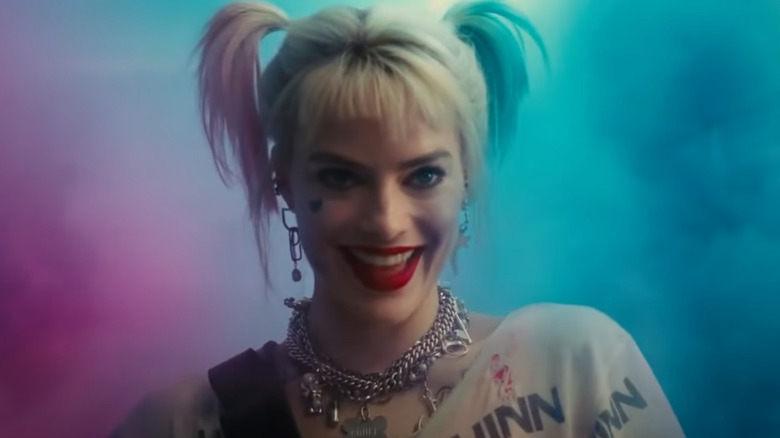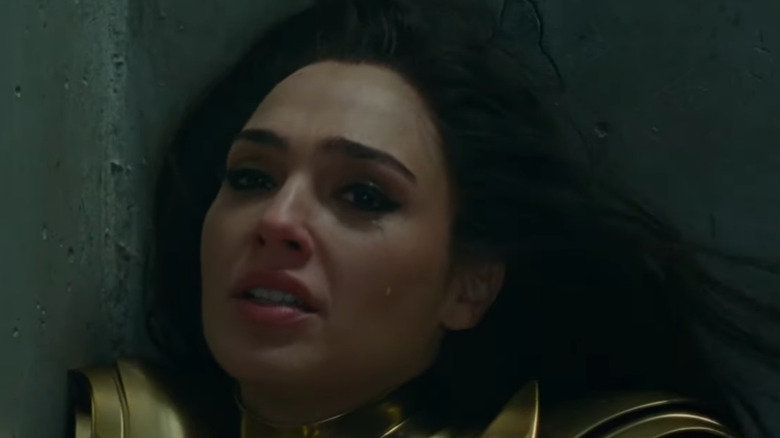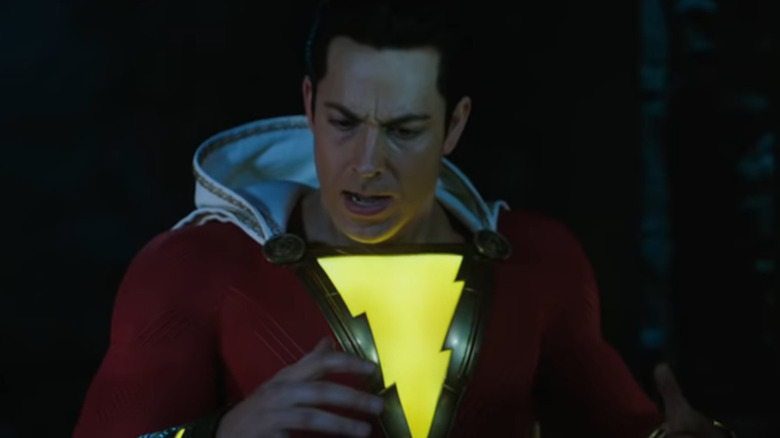DC Easter Eggs That Weren't Discovered Until Long After The Movie's Release
As most comic book movie fans expect, DC films come littered with Easter eggs for their audiences to dissect until the end of time. Some of these can be more easily caught on first viewings in theaters, while others might not be noticed until the viewer is able to play the film in slow motion at home to soak up every inch of every frame.
However obsessive a fan might be, it's all the more satisfying when the filmmakers validate the clues that fans have found in their work. Therefore, it's not uncommon for certain filmmakers to be vocal on social media or in interviews about the details that go into their films. After all, these movies can take years to make, so you can only expect they want the small details to be noticed just as much as voracious fans want to find them.
On the other hand, there are some details that are just so obscure that the fans actually need the help of filmmakers to point out what's there, or at least to clarify the reasoning behind them. Here are five Easter eggs from DC films that the filmmakers helped explain to the fans, sometimes years after the film came out.
Krypton's broken moon in Man of Steel
"Man of Steel" jumpstarted the DC Extended Universe in 2013. Directed by Zack Snyder, the film told the origin story of Superman (Henry Cavill) and brought about a legendary showdown with General Zod (Michael Shannon). However, the opening Krypton sequence gave a small hint at what was to come down the line.
In 2020, Snyder live-streamed a screening of "Man of Steel" and shared some behind-the-scenes trivia. One of the Easter eggs that the director pointed out is the broken moon orbiting Krypton, Superman's home planet. Though the moon is only seen briefly in the background of the film's first sequence, Snyder said that he included it as a reference to Doomsday.
In the comics, Kryptonian scientist Bertron attempts to make the ultimate lifeform for nearly 40 years, reusing cellular matter from each failed experiment in the next. When at last he succeeds, his creation kills him and goes on a rampage to destroy Kryptonian life. This puts him on a collision course with Superman, and when Doomsday arrives on modern-day Earth, he successfully kills the Man of Steel in the famous "Death of Superman" storyline.
Doomsday makes an appearance in the DCEU in "Batman v Superman: Dawn of Justice" from 2016. Yet, Snyder laid the groundwork for the epic battle by suggesting Doomsday's existence in these background details of "Man of Steel."
Chief's true identity in Wonder Woman
In 2017's game-changing "Wonder Woman," the Amazonian princess goes on her first solo outing, as directed by Patty Jenkins. Among the World War I sideliners helping Diana (Gal Gadot) is Chief, played by Eugene Brave Rock.
Chief is a member of the Blackfoot tribe of indigenous Americans who did historically fight in the Great War. However, Chief is more than an average Blackfoot warrior — he's actually a demi-god. In the film, Chief introduces himself to Diana in his native language using the name Napi. Napi is the creator of the Earth and an all-around trickster in Blackfoot mythology. Brave Rock clarified on Twitter after the film's release that Chief's self-identifying as Napi is not a joke — he really is the demi-god. He said it was written this way into the script.
In Native Max Magazine, Brave Rock discussed the moment, stating that it came out of concessions that Jenkins made to help lessen harmful stereotypes that having Brave Rock's character be named Chief would perpetuate. Jenkins encouraged Brave Rock to speak his native tongue in the film, encouraged him to influence the character's costume design, and allowed him to use the name Napi. Brave Rock also explained the personal significance Napi represented to him by growing up and learning stories about the demi-god, as well as praying to him regularly.
While Chief has not reappeared in subsequent DC films, his true identity is a great touch of subtle worldbuilding.
Birds of Prey's unofficial Harley Quinn power
In 2020's "Birds of Prey," Harley Quinn (Margot Robbie) attacks a police station to rescue Cassandra Cain (Ella Jay Basco), doing so with zeal by using glitter bombs, colored smoke grenades, and a bean bag launcher ... or does she? Fans quickly speculated the attack was not as non-lethal as suggested. Since Harley is mentally unstable, it would make sense for her to tweak the truth in her narration. There's also a small red area on the shirt she wears during the scene that looks peculiarly like blood.
Then in 2021's "The Suicide Squad," a scene where Harley single-handedly escapes from her captors in Corto Maltese, the film shifts to show things from Harley's perspective, adding in explosions of flowers, video game-esque scribblings, and an animated bird amid the bloodshed. Not only do these scenes have a thematic similarity, but the producers of "The Suicide Squad" explained to ScreenRant that they termed this creative technique Harley Vision and it's considered a superpower of the character.
The producers claimed its use in the 2021 film was a first within the shared universe, meaning "Birds of Prey" has no official Harley Vision. However, this has not stopped fans from claiming it as such online. The similarities are difficult to deny, and the sparse use of such theatrics juxtaposed with the other hard R-rated violence in each film makes for a strong case of DC unofficially testing the technique before giving it a name.
Wonder Woman 1984's symphonic tie-ins
Diana Prince's (Gal Gadot) second solo outing came in the long-delayed "Wonder Woman 1984." The film does not involve any of her DC superhero pals, but it does still give reference to them.
In the climactic scene, Diana gives an impassioned speech asking the citizens of the world to relinquish the wishes they had been granted through the nefarious deeds of Maxwell Lord (Pedro Pascal). Part of the reason the scene is so emotional is because of the use of Hans Zimmer's score ... except that in this scene, audiences aren't hearing the score from this film. Instead, the music used is "Beautiful Lie," which was composed by Zimmer and Junkie XL (aka Tom Holkenborg) for the 2016 film "Batman v Superman: Dawn of Justice," which introduced Diana into the DCEU.
Astute fans of the film noticed this, and director Patty Jenkins confirmed it with Mashable. She explained that the piece was being temporarily used in the film's post-production and was intended to be swapped for an original composition; however, both Jenkins and Zimmer decided the music worked too well to be replaced. "It just got to the point where Hans was like, 'Why are we doing this? It's from the DC universe. This is a song that existed in their movies. Why would it not come back?'" Jenkins told Mashable. "So that was it. It's such a beautiful track, it's the same composer, it's something that was written for this world, and so it just stuck."
Another tiny Easter egg appeared on the film's soundtrack. The music playing during Diana and Steve Trevor's (Chris Pine) reunion is titled "Wish We Had More Time," referencing a direct quote from Steve to Diana at the end of the first "Wonder Woman" film.
Shazam's horrific shout-outs
2019's "Shazam!" tells the story of Billy Batson (Asher Angel), who gains the power to transform into a superhero by saying the titular magic word. While a lighthearted tone prevails through most of the film, some scenes have an almost horror movie-like darkness to them. Director David F. Sandberg rose to prominence by creating ultra-short horror films on YouTube, eventually turning one into the 2016 feature film "Lights Out." In this way, you could expect some crossovers in his later work.
On Twitter, the director flat-out told audiences that his DC debut contained two Easter eggs: one to "Lights Out" and the other to the "Annabelle" films. The "Annabelle" connection became widely reported (the haunted doll also appears in the DC film "Aquaman"), but fewer people commented on the "Lights Out" connection. Lotta Losten, Sandberg's wife and creative partner, acts in "Shazam!" and "Lights Out." While not credited as being the same character, Sandberg's tweet indicates he considers Losten's roles to be the same and the films set in the same universe.
As if in response to a few people talking about the "Lights Out" connection, Sandberg doubled down on it for his "Shazam!" sequel. In 2021, he posted a photo to Instagram of the sequel's set, which features a "Lights Out" poster. The director mentioned in the caption that because of the angle, audiences will never get to see the Easter egg, but he wants them to know it's there.
